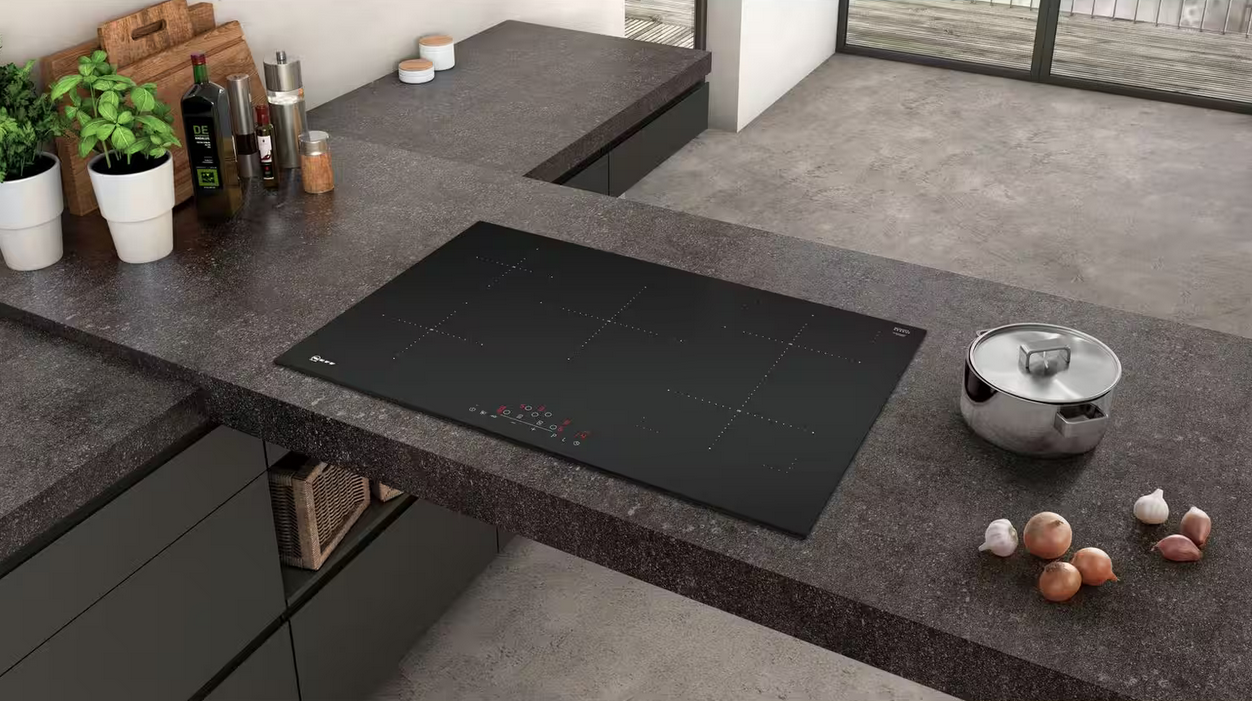
Induction hobs are a revolutionary cooking appliance which allows for easy cooking and food exploration. With the open plan of the hobs, you can experiment new recipes. If you’re new to induction hobs you may be wondering where to begin. Here are some of our top tips to optimise your cooking results with your induction hob.
Always use compatible cookware
When using an induction hob, you should always use cookware that is compatible with the induction technology. This means any pans will need to have a magnetic material for the heat to transfer from the hob to the pan. Look for cookware which explicitly states induction technology or designed for induction hobs. Without this, the pan simply will not recognised or heated by the hob.
Proper pan placement
As simple as it sounds, placing the pan directly in line with the rings on the hob can make a huge difference to cooking results. The magnetic field that transfers the heat comes from this ring so having the pan directly on top heats up more effectively. This means to get the best results we recommend lining up the pan with the hob.
Regularly clean and maintain
Did you know regular cleaning and maintenance can significantly impact the effectiveness of your induction hob? As the hob heats up by heating the cookware, any dirt or debris building up on the hob can stop the heat and prevent the pan from heating up fully. By cleaning regularly after each use, you can keep it working effectively and lasting longer.
Utilise power settings
Your induction hob is likely to come with a range of power settings, like a temperature dial on a standard hob. This enables you to adjust the heat where required to cook effectively. This is important to ensure that food is cooked thoroughly. You can also utilise different power settings to crisp certain foods where necessary, or perhaps use a low power to simmer.
Take advantage of boost functions
If your hobs have a boost function, this can be a game changer for adding a boost of heat. It is most useful for times where you need to quickly bring water to a boil. You should keep in mind that this boost will likely use more energy than other methods, such as a kettle, so try to use this wisely with the meals you are preparing.
Understand cooking zones
Some models allow you to essentially ‘merge’ zones together into one large zone making it easier to cook bigger pans. These zones are sometimes called bridged zones. These are ideal for using when you have a bigger meal to prepare, or when using induction-based griddle plates which require a larger surface area.
Become familiar with any safety features
Safety features are important with cooking appliances to ensure that accidents are avoided. With induction hobs you will usually find some sort of thermal cut out that occurs after a period within any activity. We recommend understanding how this works as the appliance will turn off when unattended. This means if you are remaining with the appliance whilst cooking but haven’t touched or moved anything in a while, to ensure you are adjusting periodically so that it doesn’t shut down.
What’s next?
There may be specific features on your appliance that can further enhance your experience. Once you’re fully familiar, it’s time to cook and experiment with new recipes!